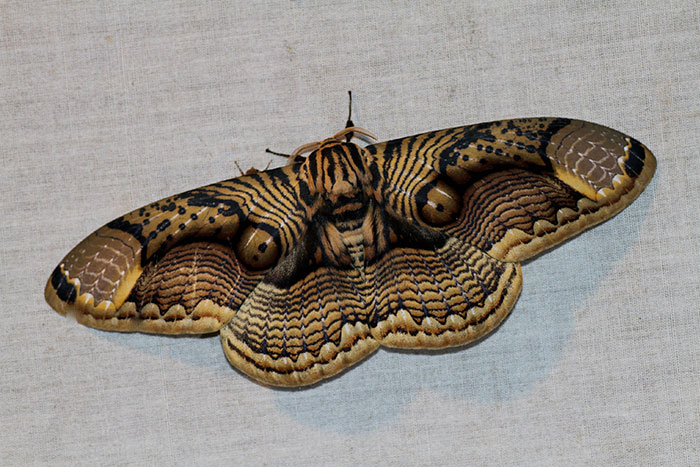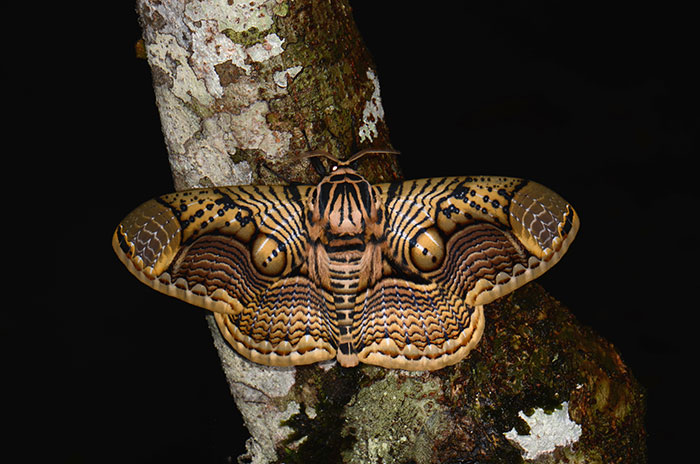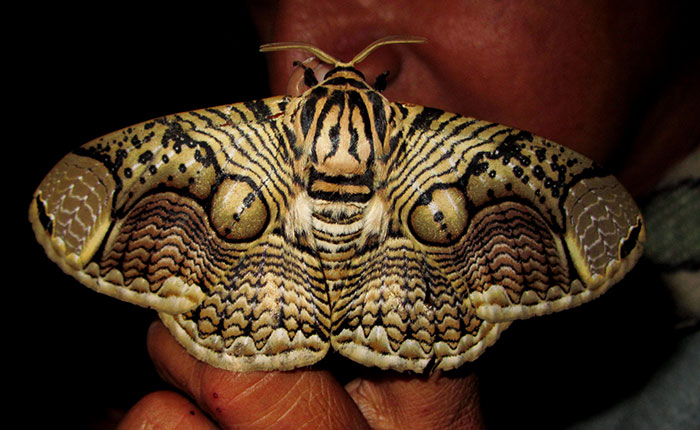Amazing Footage Of A Giant Brahmin Moth With Tiger’s Eye Wing Pattern Is Shared By A Wildlife Photographer
More info: davidweiller.com | Instagram | twitter.com
The world of wildlife photography unveils extraordinary and elusive creatures that inhabit our planet. These photographers are crucial in showcasing the diverse and awe-inspiring animals that may remain unknown. From the majestic Philippine eagles to the endangered white-bellied pangolins, their lens captures the essence of these remarkable beings before they vanish forever. In nature exploration, photographer David Weiller recently unveiled the mesmerizing beauty of a rarely-seen creature—the Brahmaea hearsay moth.

Image credits: DAVID WEILLER
Living in France, David Weiller embarked on his wildlife photography journey in 2008 when he accompanied his friend and renowned wildlife photographer, Thomas Marent, to Africa. Marent was capturing images for his primate book, “Like Us: Encounters with Primates.” Inspired by this experience, Weiller decided to delve deeper into wildlife photography.

Image credits: goldentakin
The Brahmaea hearseyi moth, an intriguing species, can be found in the Northeast Himalayas, Western China, Sundaland, Burma, and the Philippines. While exploring, Weiller stumbled upon this peculiar moth in Sabah, Borneo. He shared his excitement, stating, “This was a stroke of luck as it was attracted to the light of my bungalow in the rainforest during the night. When I first saw it, freshly hatched and adorned with striking patterns, I was truly astonished. After observing its graceful flight around the light source, it eventually settled for the night on a nearby tree trunk”.

Image credits: Dr. Alexey Yakovlev

Image credits: Pavel Kirillov
Seizing the opportunity, the photographer managed to film an incredible HD video, highlighting the moth’s intricate markings. When asked about capturing this footage, Weiller revealed, “While some shots require days or even weeks to obtain, this particular shot was relatively simple. Moths are quite cooperative to photograph during when they are awake in the early morning still dormant and relatively motionless due to the cool temperature. The following morning, at dawn, the moth was still peacefully perched on the same spot. I set up my tripod, camera, and macro lens and began capturing pictures and videos of it, gradually warming up by fluttering its delicate wings. Within a few minutes, as the sun ascended, it gracefully took flight, disappearing into the boundless blue sky”.

Image credits: Хомелка

Image credits: goldentakin Follow
The moth-enthralled Weiller belongs to the Brahmaeidae family, also known as the Brahmin moths. This family encompasses seven different genera and nearly 40 distinct moth species. However, among them, the Brahmaea hearsay stands out as the most extraordinary, boasting brown-colored wings that resemble a tiger’s captivating eyes.
Wildlife photographers like David Weiller contribute immensely to our understanding and appreciation of the world’s biodiversity. Their lens allows us to witness the stunning beauty and remarkable characteristics of rare and elusive creatures. Weiller’s encounter with the Brahmaea hearsay moth showcases the unparalleled elegance of nature’s creations. The moth’s tiger eye wing pattern is a testament to the astonishing diversity within the animal kingdom. As we keep investigating the mysteries of our planet, let us cherish and protect these extraordinary species for generations to come.